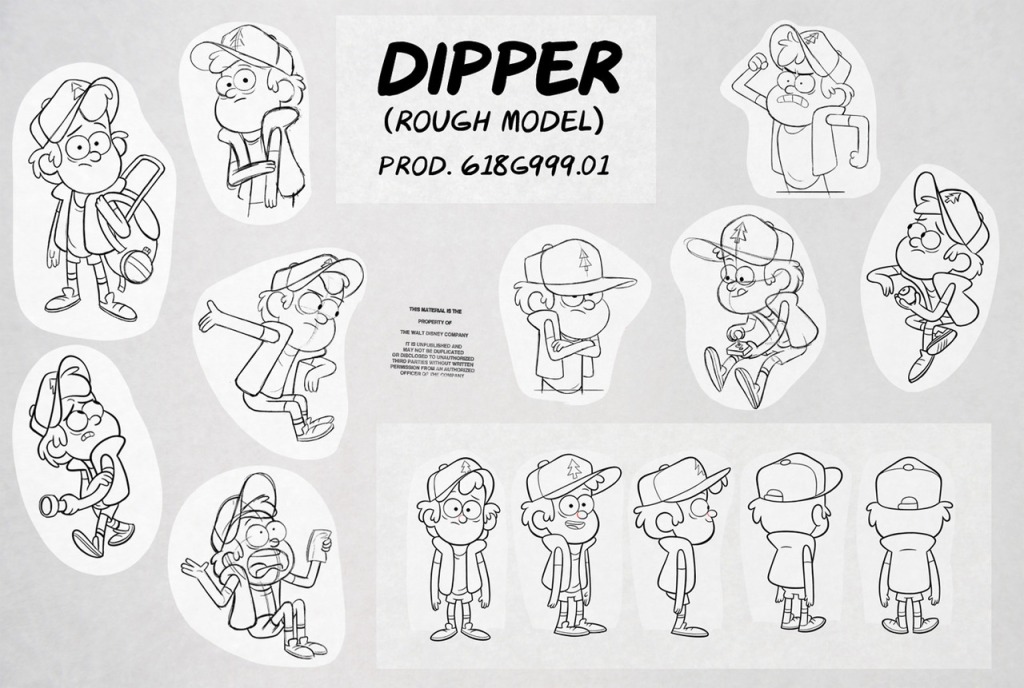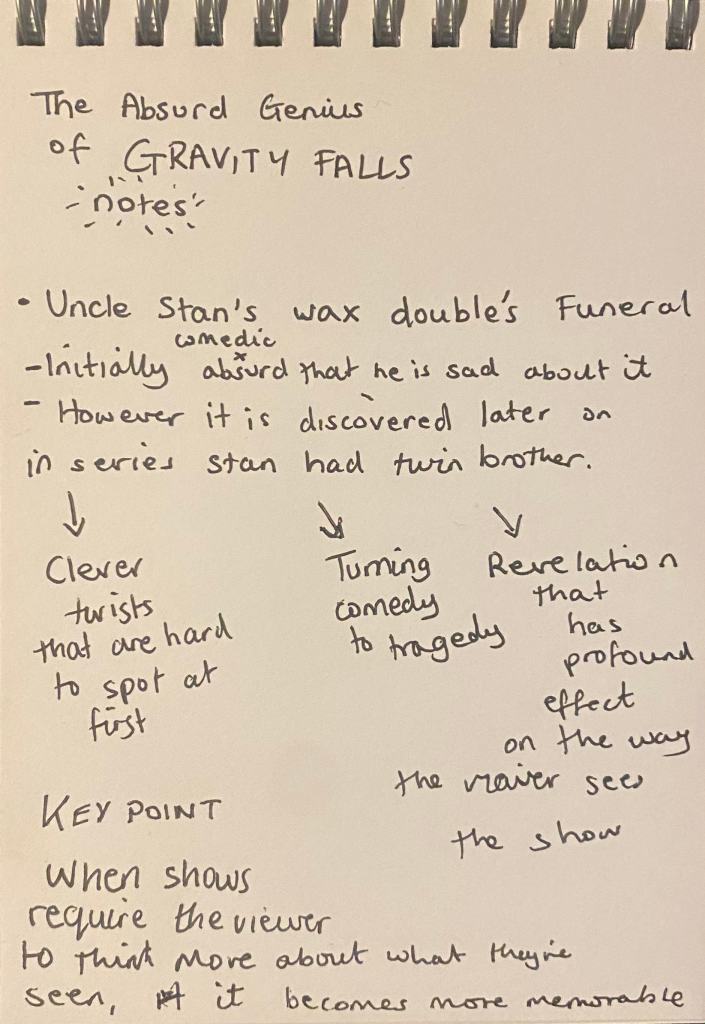Samuel Bryant
(Read in descending order)
24 October 2021 – Choosing my topic of research
So far, my intentions with this project are to explore something in the area of horror and/or comedy. The reason I want to explore these genres is because I think that the way I want to animate definitely lends itself into both of these categories of film. However, I do want to keep my options open, since I feel that if I narrow down on one idea too much this early, I could find myself dissatisfied with the end product. I want to explore how my favourite animators and filmmakers define themselves amongst others, and learn how to apply what I’ve discovered towards my own films and find a way to find my true style and who I am as a filmmaker.
As well as that, I intend to work in 2D so that I can work on my character design and develop more of a style; something that I’ve been lacking in for a while. Naturally, I take inspiration from animated shows I watched in my younger years. This helps, because I want to create something that all ages can enjoy universally, but differently. I have a great appreciation for shows that have held up as I’ve grown up, and I aspire to be able to form something that has layers to it in this way.
Gravity Falls is a prime example of a show that has both aspects of horror and comedy, while also pandering to a younger audience. The reason it’s design stands out to me is for its mix of simplicity and complexity. Each character is incredibly distinct, yet no character is hard to read or too complex for one to draw consistently. You can almost see how each character has been drawn layer after layer, going from simple shapes to a unique and outstanding sprite.
I found, when rewatching this series, that because the characters that we come to know (Dipper, Mabel, Stan etc.) are relatively simple in design, the villains or monsters that appear in the episodes stick in your mind a lot more, because they have more ambitious and abstract designs. For example, as you can see below this paragraph, characters such as ‘.GIFfany’ and ‘Bill Cipher’ stand out both in the drab environment in which Gravity Falls is set, and against the simplistic characters who face them. They both catch the eye of the viewer in their own regards, with both their colours and designs.
One way or another, the producers and creator of Gravity Falls know what they’re doing when it comes to character design. The creator of Gravity Falls, Alex Hirsch, said:
“The Simpsons was something that, growing up, I could tell it was smarter than I was. I could tell there were layers and hidden jokes and references that I didn’t understand, but I understood the characters. Great shows have those kinds of layers and have that sort of broader appeal not just to kids, but to adults.” (Source: TIME: Disney’s Gravity Falls Creator on How to Create a Show for All Ages)
I completely agree, The Simpsons was the one show I consistently watched throughout my entire childhood, but I found as I rewatched episodes from years before that I’d previously seen, I realised that so many punchlines had flown over my head. This method of writing is so hard to get right, and it can come off extremely tacky if done wrong. This quote can be applied to the way I go about writing my own scripts in the future, and how I design my characters.
That’s why no matter how devilish your villain is or how complex and interesting your plot may be if you do not have characters that the viewer can grow attached to, relate to and react to they will have no investment or emotion to keep them watching.
I took some notes from an article and a video essay regarding Gravity Falls, named ‘Disney’s Gravity Falls Creator on How to Create a Show for All Ages‘ and ‘The Absurd Genius of Gravity Falls‘ respectively and tried to apply what I’d learnt to a couple of quick sketches. You can see these below.
26 October 2021 – Defining my intentions
I’ve talked a lot about the inspiration I’ve taken from Gravity Falls so far, and I don’t think that best reflects my full intentions anymore. While I definitely want to use it as a guideline to develop my ideas further I definitely have a lot more ideas I want to explore first.
For example, while Alex Hirsch (creator of Gravity Falls) absolutely understands how to convey both horror and humour for a wider range of audience, I also want to look at how another show from my younger years shaped how I picture scary stories in my head to this day. Grizzly Tales for Gruesome Kids was a show that first aired in 2000, a year before I was born. It was originally a book written by Jamie Rix in 1990, who would also go on to direct the animated show 10 years later alongside Sara and Simon Bor.
I feel inclined to point out that this show is a completely different approach to the same genre as Gravity Falls, and that these two shows were published twelve years apart from eachother. As well as that, these two shows are British and American respectively. I decided to list the other similarities and differences here in a Venn Diagram to help me too see how they differ and how they are similar. Obviously, as you can see below, the differences outweigh the similarities when it comes down to production

28th October 2021 – My intentions
After mulling over what I’ve discovered so far, I realised I’d missed the obvious point of what links these two shows, above all. They both build their own worlds. When you watch these shows, you know what you’re getting yourself into the moment they begin. And it’s not just the characters that do this, it’s the background, the lighting, the colours, the props, the atmosphere and the sound design. They don’t just focus on one aspect of filmmaking and nail it on the head (especially Gravity Falls), they cover all the bases for effectively storytelling.
It’s very hard to create something meaningful if you don’t look at the overall picture, and that’s what I’ve been struggling to do with my work. I’ve always looked at my films in a linear manner, and wanted to just make the story as it went along and do the fine tuning later. It has taken me too long to realise that the fine tuning must come first, when you’re building the world the characters live in.
And so, I am excited to explore the world of not just character design or dialogue; more so creating a universe, big or small, that people want to live in and experience. It’s all well and good having characters with ’emotional’ back stories and capturing designs, but if people don’t want to allow themselves to be enveloped by the world you’ve created, they’re not going to have the experience you intend.
And so, to further develop my skills and my wisdom in the area of animation and storytelling, I would like to pose, for now, the question “How does one effectively create a comedic, yet chilling universe within animation?” I could obviously tweak this question later on, but I think this is a great starting point.
31st October 2021 – Finding inspiration
When looking for relevant sources to study, I want to find films or shows that tell a story beyond the first viewing. I want to explore the idea behind expanding a basic story into a multi-dimensional idea that can be played with in fun ways and interacted with outside of just the main story. For example, video games, films and TV shows that I have grown to enjoy often find themselves attract cult followings, whether they were received well critically or not.
Fallout, Adventure Time and Fantastic Mr. Fox are all animated cult classics in their own rights, while all being completely different. The main theme they all share though, an expansive world that goes in depth beyond the characters. Where an angle or an object is treated with the same respect as the main focus of the scene.
Colour:












